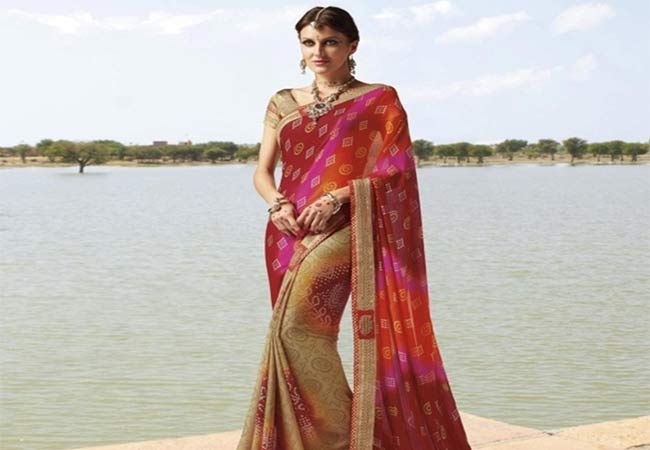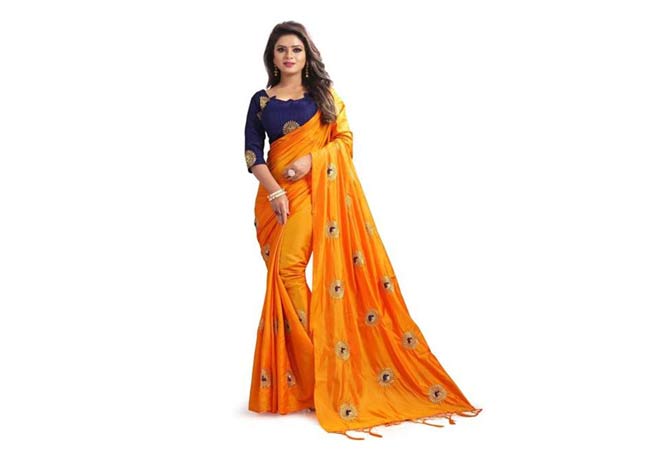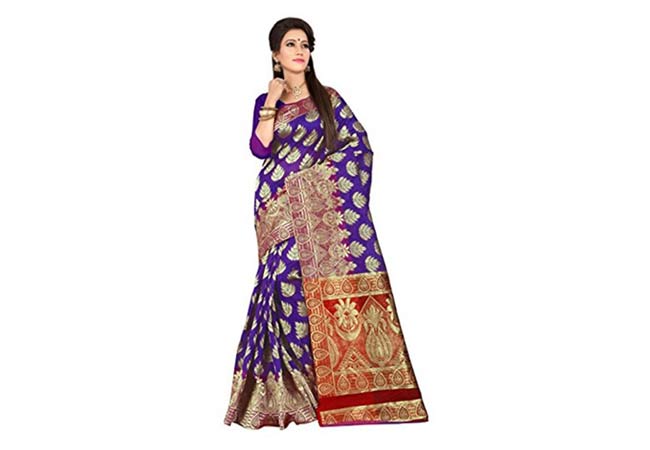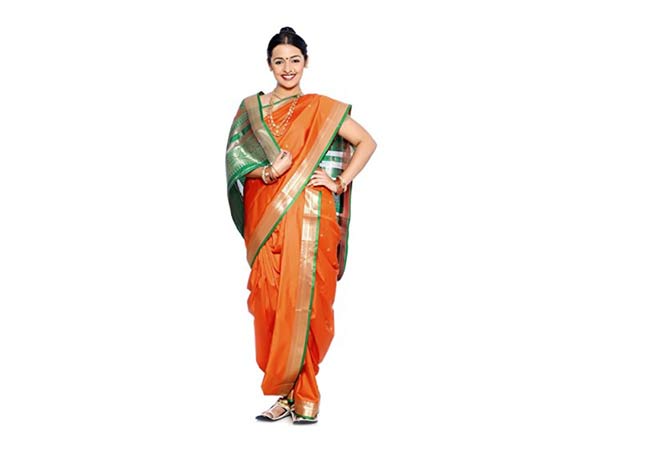Saree: Often spelled as Sari or Shari finds its roots deep in the heritage of India. It is known for glamour and the touch of elegance it has been offering to cultures all around the globe.

The Indian sarees hold an everlasting charm since it’s not tailored for a particular size and define the style.
A saree consists of a cloth ranging from 4.5 to 9 meters in length, which is draped in vivid styles. It is worn with adornments as unique as a saree itself. Usually, it is worn with a blouse (choli) and a petticoat.
Accessories Required to Wear a Saree
Choli: A kind of a blouse that is worn under the saree. It originally consisted of bare backcloth which Is tightly fitted. Though back cover blouses are also now. The sleeves lengthen between full sleeves, half sleeves and sleeveless. It is believed that the cholis evolved into clothing during 10th Century AD. It is usually made of cotton or silk and comes in different designs which add to fashion.
Petticoat: This piece of garment is worn under the saree to hold it in its place. It is more like a long skirt. The petticoat comes in varieties to match with the saree. It is usually tied to the waist with the help a string.
Recommended For You:
- Lehenga Saree: A Perfect Mixture of Comfort and Style
- Pink Diamonds – Mobile High-Value Asset for Investors and Celebrities
- 4 Tips to Save Money on Your Wedding Day
Origin of A Saree
The word sari evolved from the word ‘sattika’ which was mentioned in the earliest scriptures of the Buddhists and the Jains. The earliest form of saree depicted in India is the statue of a priest from Indus Valley wearing a drape. This 3 piece dress was known as ‘Poshak’. During the 2nd Century B.C. to 1st Century A.D, a single garment emerged which was known as sari mentioned in the Pali literature.
Collection of Sarees
The diversity in India has offered to the world unique range of sarees in terms of weaving and fabric. The designs characterize unique style caret. The versatile range includes:
Bandhani Saree: It is the classic wear of the Gujratis and Rajasthan. It is woven by hand, which involves tying and dying of the cloth.

Banarasi Saree: As the name suggests this saree comes from the city of Banaras. It is a popular silk saree and it resembles Mughal designs. It is treated ideally as a wedding saree.

Kanjeevaram Silk Saree: It is one of the finest silk sarees that is produced in Tamil Nadu. It comprises of a lot of Zari work and colorful threads.

Cotton Printed Saree: This variety has a different artistic touch which includes handmade drawings, block printing, batik work etc. Kolkata and Mumbai are famous for printing and selling these sarees.
Cotton Handloom: Tant, Baluchuri and Jamandi Bengal Handlooms display silk thread work across the border of the saree. Well – known for comfort and simplicity. Floral designs and drawings appeals for these handlooms.
Printed Chiffon Saree: Easy to wash chiffon sarees show colorful combinations.
Southern Saree: Bangalore and Mysore Silk from Karnataka, Venkatgiri, Guntur, Mangalpuri from Andhra Pradesh are among the famous southern styles of saree available in India.
Mysore silk is among the finest silks whereas Bangalore silk is a form of synthetic silk.
Embroidered Saree: Georgette, silk, crepe, and chiffon casts the basic fabric for these kinds of sarees. Heavy design work is notable for these sarees which include embroidery using stones and zari.

How to Wear a Saree
A saree is worn in different ways. It varies with regional diversity in India.
The following is, however, a generalized way of wearing it:
- It begins with tucking the edge into the petticoat.
- The remaining part of the saree should touch the floor and come on the left-hand side.
- Now wrap the saree once around the waist until it comes on the right- hand side.
- Staring at the tucked end make 5 to 6 equal length pleats.
- Hold the pleats together so its lower end is just off the ground and you can pin it using a safety pin.
- Tuck the pleats into the petticoat and make sure it opens to the left side.
- Holding the top edge drape the remaining saree around the hips.
- Bring the remaining portion under the right arm and put it over the left shoulder. This is known as the pallu.
Bengali Style: Wrapped around the waist, the saree is worn pleatless. The pallu is put under the right shoulder and wrapped around the body twice and finally hanged over the right shoulder.
Maharashtra Style: These sarees usually measure 8 meters and it is tucked behind at the waist putting the through the legs. It gives facilitates smooth movement.

Gujarati Style: Instead of dropping the pallu over the left shoulder it is hanged over the right one. Spreading over the chest its left edge is tucked at the back.
Tamil Style: These sarees measure 8 meters in length just like the Maharashtra sarees. The pleats are tucked in front of the left leg and the remaining is wrapped around taking over the left shoulder to tuck in the left side.
India is a land of diversity. However, Indian sarees have been building up the unity in diversity with the foundation of style, culture, and heritage which is admired globally.
The styles of wearing a saree may differ explicitly. The local tribal sarees look unique in its own way and they are no less than a piece of artwork themselves. They have their own way of carrying them and it is gaining popularity very fast. These pieces of artwork and culture are reaching out over the boundaries proving their worth.
At Style Caret all your yearning for varieties of sarees will be met. Executive collection awaits you to explore and redefine yourself. A saree is not just a piece of clothing here. It allures your emotions and invites culture and adds a graceful touch to your life. Now roam no further. Sarees of your dreams are just one click away here at StyleCaret.